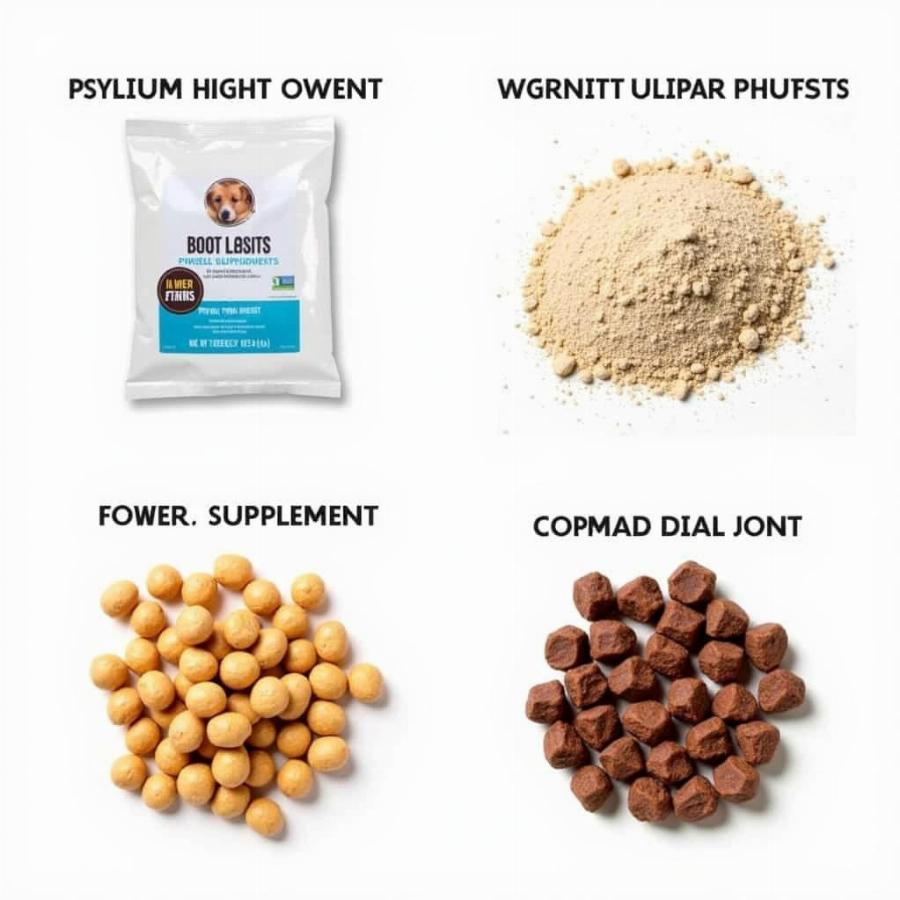Adding fiber to your dog’s diet can be a game-changer for their digestive health and overall well-being. Whether your furry friend struggles with constipation, diarrhea, or maintaining a healthy weight, understanding the role of fiber and how to incorporate it safely can make a significant difference. This comprehensive guide will delve into the benefits of fiber, different sources, and how to adjust your dog’s diet appropriately.
Fiber, often referred to as roughage, is a type of carbohydrate that the dog’s body cannot digest. While it doesn’t provide direct nutritional value in the form of calories, it plays a crucial role in regulating the digestive system. It helps move food through the intestines, adds bulk to the stool, and can even promote a feeling of fullness, which is beneficial for weight management. Are you curious about how to introduce fiber safely and effectively? Let’s explore the details.
Understanding the Benefits of Fiber for Dogs
Why is adding fiber to a dog’s diet so important? The benefits extend beyond just digestive regularity. Fiber can contribute to a healthier gut microbiome, improve blood sugar control, and even help manage certain medical conditions. For dogs prone to constipation, fiber adds bulk to the stool, making it easier to pass. Conversely, for dogs experiencing diarrhea, certain types of fiber can absorb excess water and firm up the stool.
For overweight dogs, adding fiber can help them feel full and satisfied with smaller portions, aiding in weight loss. It’s important to consult with your veterinarian before making any significant dietary changes, especially if your dog has pre-existing health conditions. They can advise on the appropriate type and amount of fiber to add.
Choosing the Right Fiber Sources for Your Dog
Not all fiber is created equal. There are two main types of fiber: soluble and insoluble. Soluble fiber dissolves in water, forming a gel-like substance in the digestive tract. This type of fiber can help regulate blood sugar levels and improve stool consistency. Common sources of soluble fiber include pumpkin, sweet potato, and apples (without seeds or core).
Insoluble fiber, on the other hand, doesn’t dissolve in water and adds bulk to the stool. This type of fiber is particularly helpful for dogs experiencing constipation. Good sources of insoluble fiber include wheat bran, brown rice, and vegetables like carrots and green beans.
How to Add Fiber to Your Dog’s Diet Safely
Introducing fiber gradually is key to avoiding digestive upset. Start by adding small amounts of fiber-rich foods to your dog’s regular diet and monitor their stool consistency. Increase the amount gradually over several days or weeks until the desired effect is achieved.
Can I use fiber supplements for my dog?
Yes, fiber supplements are available for dogs and can be a convenient way to boost their fiber intake. Common supplements include psyllium husk and beet pulp. However, it’s essential to consult with your veterinarian before starting your dog on any supplements. They can help determine the right type and dosage for your dog’s individual needs.
 Fiber Supplements for Dogs
Fiber Supplements for Dogs
Monitoring Your Dog’s Response to Added Fiber
Once you’ve added fiber to your dog’s diet, pay close attention to their stool. Ideally, the stool should be firm but not too hard, and easy to pass. If your dog experiences excessive gas, bloating, or diarrhea, reduce the amount of fiber and consult with your veterinarian. It’s crucial to ensure your dog has access to fresh water at all times, especially when increasing fiber intake, as fiber absorbs water.
Conclusion
Adding fiber to your dog’s diet can have numerous benefits, from improving digestive health to aiding in weight management. By understanding the different types of fiber and how to introduce them safely, you can help your furry friend achieve optimal health and well-being. Remember to consult with your veterinarian before making significant dietary changes, especially if your dog has existing health concerns. They can provide personalized guidance based on your dog’s individual needs.
FAQ:
- What are the signs of fiber deficiency in dogs?
- Can too much fiber be harmful to dogs?
- What are the best fiber-rich treats for dogs?
- Can I add fiber to my homemade dog food?
- Is fiber good for dogs with sensitive stomachs?
- How can I tell if my dog is getting enough fiber?
- What should I do if my dog has an adverse reaction to added fiber?
Beaut Dogs is your go-to resource for all things related to dog care. We provide expert advice and guidance on various aspects of dog ownership, from choosing the right breed to providing comprehensive care instructions. When you need assistance, please contact us via Email at [email protected] to receive detailed and accurate answers from Beaut Dogs.